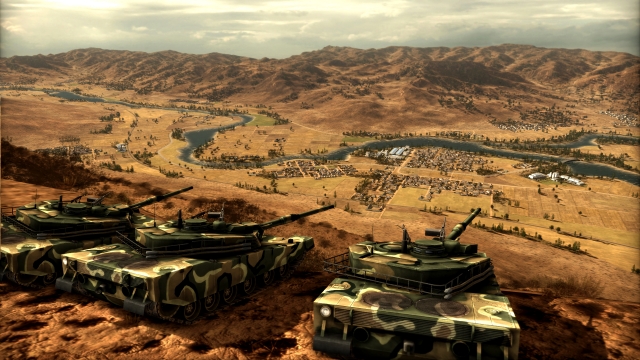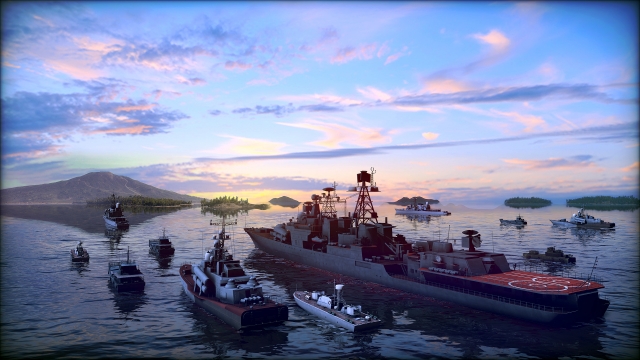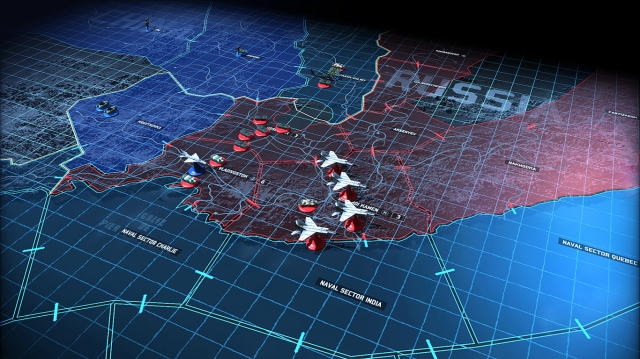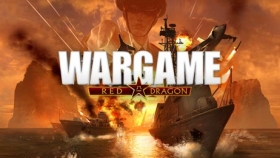
Wargame: Red Dragon Review
Let’s get one thing straight here right off the bat: Wargame: Red Dragon doesn’t really have the right to call itself a full game. So the fact that it’s available now for full price, posing as a whole new addition to the Wargame franchise isn’t too cool. Even for (and as) a fan of the series, it’s difficult to justify publisher Focus Interactive’s decision not to simply make this DLC for AirLand Battle. Frankly, even that game was lacking in new content and felt more like an expansion for 2012’s Wargame: European Escalation. It’s an odd situation that’s something of a reversal from the norm in the whimsical land of modern PC gaming. As opposed to releasing small pieces of cheap DLC, developer Eugen Systems has delivered two fully priced games that offer about the same amount of content that expansion packs of old would offer.
So that’s a downer right from the off, and it’s difficult to ignore no matter how many hours you plug into the game. For what it’s worth though, the core game, and the premise, is still fantastic. No matter how suspect the distribution may be, Eugen Systems has crafted a gem of strategy gaming and Red Dragon doesn’t lessen the brilliance of the outrageously huge land battles. Put simply, there’s no game on the planet that delivers battles, hell anything at all, on such a huge scale. God of War has its Titans and Skyrim has its open-world, but nothing compares to the battles of the Wargame series. The concept of zooming in and out of a strategy game has been a strangely satisfying enigma for decades; Red Dragon is the ultimate zoom-drug (if you will), which means there’s an ungodly amount of space to do battle in.

What’s made Wargame an enduring title is not only this epic scale, but the satisfying, realistic and wholly tactical gameplay that’s arguably the finest representation of true modern warfare out there. So having already conquered the art of land battles, it probably made sense for Eugen to turn their focus towards the sea; after all, naval combat is a big part of modern war. Yet history has taught us one golden rule about naval combat in strategy video games. It s(t)inks. Like, always. There’s a Blackbeard’s stash amount of awful naval simulator games and naval combat titles out there, and thankfully like the pirate's treasure they’ve long been buried. Even arguably the finest strategy devs out there, The Creative Assembly, haven’t been able to create fun sea battles in all four of their previous Total War games.
Has Eugen bucked the trend and brought us a fun, hell we’ll take not awful, naval combat game? No, is the simple answer. They certainly have not. To be fair this is probably one of the best efforts yet, but it by no means deserves to be the headline attraction of the whole game. The naval combat, on the whole, is pretty boring. There are moments of enjoyment, but these are lost in the horrible stretches of time where nothing really happens. It’s an issue with realistic naval combat that has plagued many a game: the simple fact that, in reality, ships typically battle without even seeing each other. That doesn’t make for an especially engaging gaming experience, and it probably never will. Short of seriously derailing the tracks of history and throwing in some swashbuckling pirates, there isn’t a lot Eugen can do about it.

Saying that, they don’t help matters. For one thing, the ships don’t have any sound effects while moving; the gun shots are there, and very satisfying, but there’s an awkward lack of engine noise. In classic Eugen style, the ships are very well recreated in-game, but it’s difficult to see them as brutal weapons of war when they silently glide through the water. Ships may not be as noisy as a battalion of tanks, but there are some pretty beastly engines beneath the armour and the fact that this isn’t represented in-game is a notable omission. As mentioned though, the ships are incredibly detailed; something we’ve come to expect from the Wargame series. It’s just a shame that the great looking ships aren’t used in an entertaining way; the closest naval combat comes to fun is during the amphibious landing battles which see ships support land troops.
Thankfully, the naval combat isn’t the only addition to the mix. Red Dragon also introduces a series of new solo campaigns along with the host of new nations including North and South Korea, Japan, Australasian forces and The People’s Republic of China (hence the title). These new nations feature a bunch of new units which brings the total count up to some ridiculous number; a number so high in fact, that it becomes difficult to distinguish units outside of their core roles. There are slight differences in each unit that make it worth checking their stats first, but by this point there’s no real sense of differentiation. Unless you’ve got a keen interest in Asian and Australasian forces in the late 20th century, then you’re unlikely to find the new units of any particular interest.

Which leaves the new campaigns as the final key addition to the series. Interestingly, the four solo campaigns on offer from the off strike a balance between the focused scenario-based missions of European Escalation and the tactical map campaign of AirLand Battle. The tactical map makes a return, although this time the four campaigns present different regions of Asia on a smaller scale. The separate challenges also put the player in control of differing armies, from South Korea to the UK. On the whole, these campaigns are much improved on the single player offering in AirLand Battle; the tighter focus makes decisions all the more important and it’s easier to become attached to your battling boys. The focused objectives also help to centralise play, forcing players into enjoyable conflicts. It’s not as free as the AirLand Battle campaign, but it trades in freedom for fun.
The ‘same battle over and over’ issue still plagues the solo offerings; the freedom vs focus debate is a divisive one, but playing on the same field of battle three times in a row is never fun. Fundamentally, Wargame: Red Dragon is a better game than this review may suggest. However, the fact of the matter is that very little has changed, in particular the best bits of the last two games. The multiplayer is practically identical but for the new units and maps. While the land battles feel almost identical to those found in the original, the inclusion of a game speed changer is probably the best addition to the core mechanics. Wargame: Red Dragon is the first title in the series to show a little wear and tear. It’s still an excellent strategy game and a showpiece in technological game design, but after three games in three years, and a lack of innovation from one game to another, it’s difficult to justify the full price tag.
Wargame: Red Dragon (Reviewed on Windows)
Game is enjoyable, outweighing the issues there may be.
Wargame: Red Dragon is the first title in the series to show a little wear and tear. It’s still an excellent strategy game and a showpiece in technological game design, but after three games in three years, and a lack of innovation from one game to another, it’s difficult to justify the full price tag.












COMMENTS